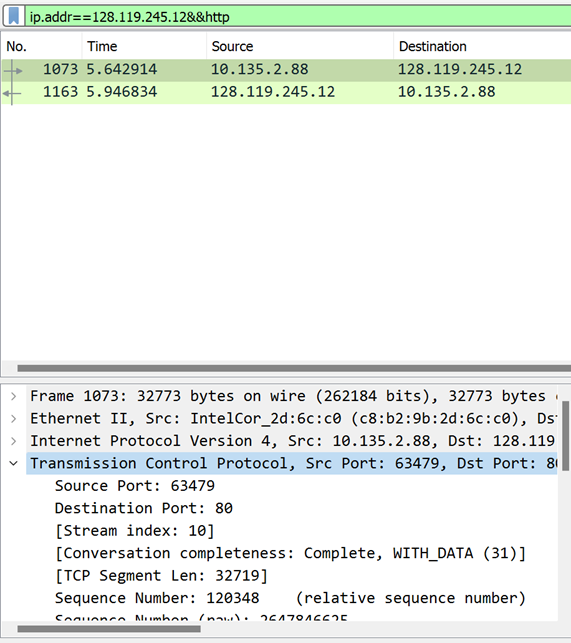
- What is the IP address and TCP port number used by the client computer (source) that is transferring the file to gaia.cs.umass.edu?
客户端的IP地址为10.135.2.88,端口号为63479。
- What is the IP address of gaia.cs.umass.edu? On what port number is it sending
and receiving TCP segments for this connection?
gaia.cs.umass.edu的IP地址为128.119.245.12,端口号为80。
If you have been able to create your own trace, answer the following question:


- What is the IP address and TCP port number used by your client computer (source) to transfer the file to gaia.cs.umass.edu?

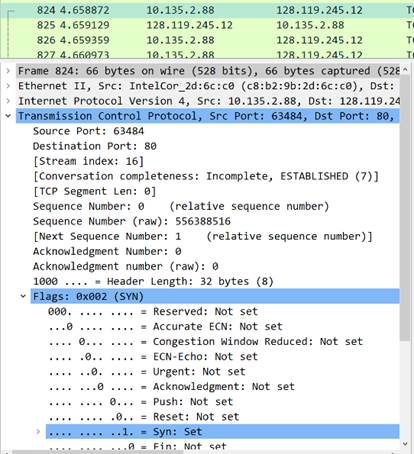
- What is the sequence number of the TCP SYN segment that is used to initiate the
TCP connection between the client computer and gaia.cs.umass.edu? What is it in the segment that identifies the segment as a SYN segment?
sequence number of the TCP SYN segment is 0.
Flags identifies the segment as a SYN segment.
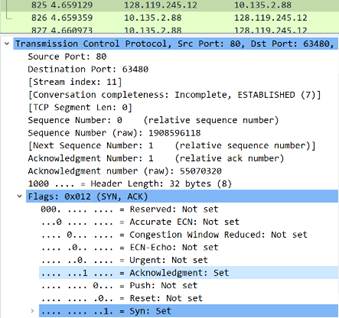
- What is the sequence number of the SYNACK segment sent by gaia.cs.umass.edu to the client computer in reply to the SYN? What is the value of the Acknowledgement field in the SYNACK segment? How did gaia.cs.umass.edu determine that value? What is it in the segment that identifies the segment as a SYNACK segment?
The sequence number of the SYNACK segment is 0.
The Acknowledgement field in the SYNACK segment is 1.
Flags identifies the segment as a SYNACK segment.


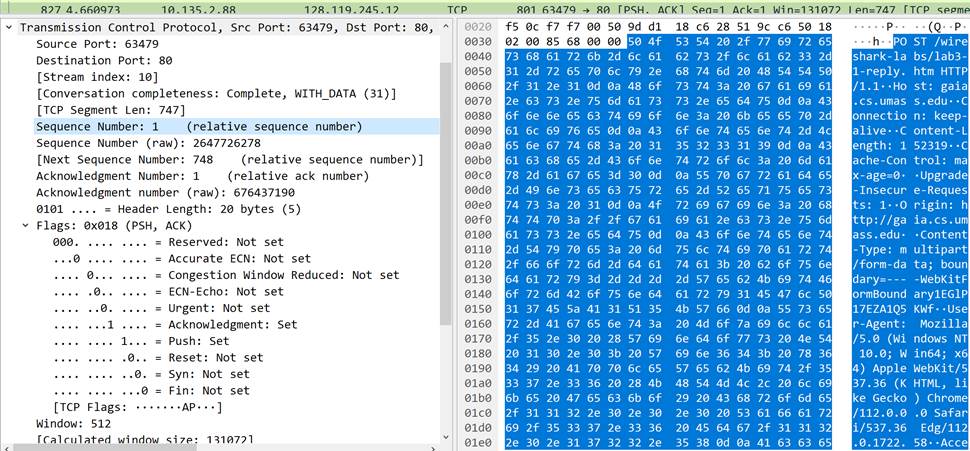
- What is the sequence number of the TCP segment containing the HTTP POST
command? Note that in order to find the POST command, you’ll need to dig into
the packet content field at the bottom of the Wireshark window, looking for a
segment with a “POST” within its DATA field.
The sequence number is 1.
(我的网络情况有点不太寻常,跟lab官方提供的抓包数据差别有点大)
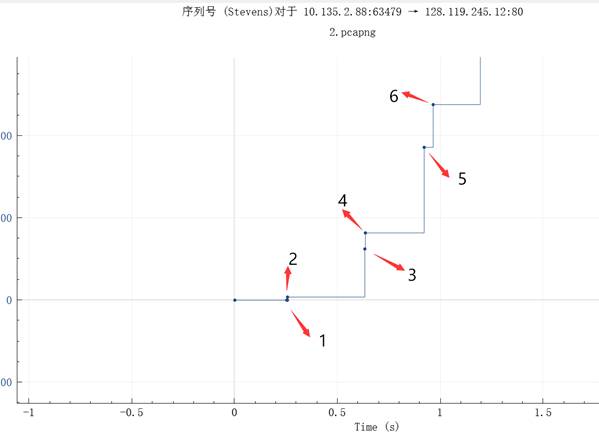












- Consider the TCP segment containing the HTTP POST as the first segment in the TCP connection. What are the sequence numbers of the first six segments in the TCP connection (including the segment containing the HTTP POST)? At what time was each segment sent? When was the ACK for each segment received? Given the difference between when each TCP segment was sent, and when its acknowledgement was received, what is the RTT value for each of the six segments? What is the EstimatedRTT value (see Section 3.5.3, page 242 in text) after the receipt of each ACK? Assume that the value of the EstimatedRTT is equal to the measured RTT for the first segment, and then is computed using the EstimatedRTT equation on page 242 for all subsequent segments.
Sequence numbers: 1, 748, 12448, 16348, 37148, 47548
Time: 4.660973 4.661632 5.037567 5.040344 5.326128 5.369832
ACK received time: 5.036512 5.040239 5.325987 5.369514 5.602123 5.642801
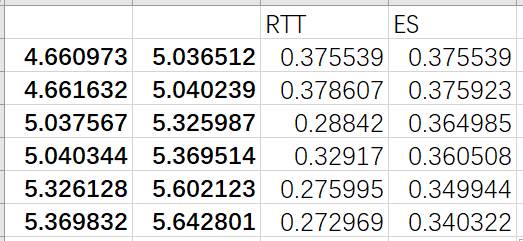
EstimatedRTT=(1****−a)×EstimatedRTT+a×SampleRTT,a=0.125
- What is the length of each of the first six TCP segments?
747 11700 3900 20800 10400 39000

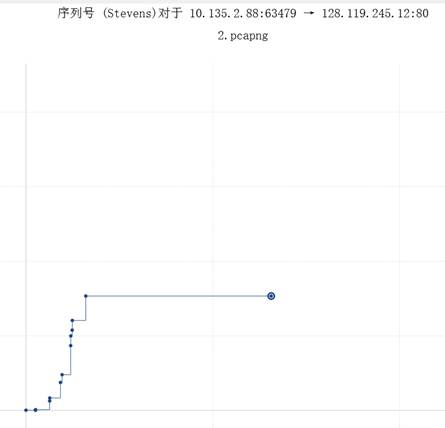
- What is the minimum amount of available buffer space advertised at the received
for the entire trace? Does the lack of receiver buffer space ever throttle the
sender?
29200
No throttle is made due to the lack of buffer space.
- Are there any retransmitted segments in the trace file? What did you check for (in
the trace) in order to answer this question?

There is no retransmmited segment in the trace file.
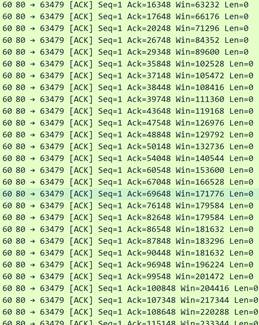
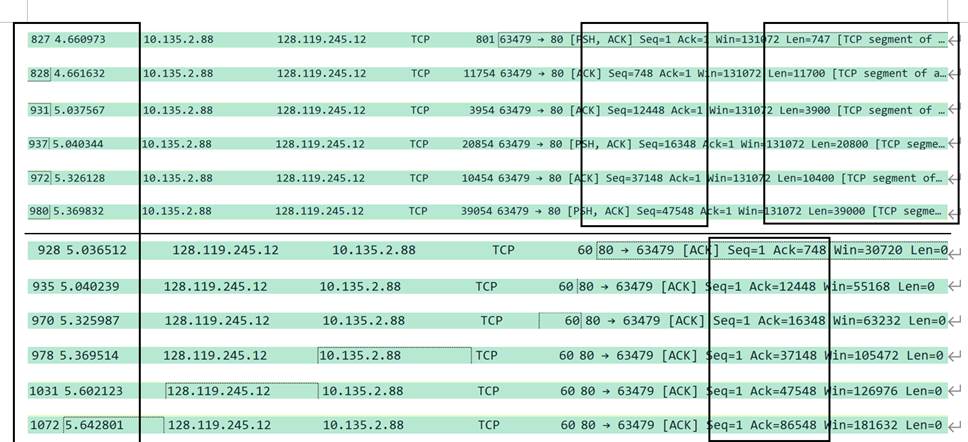
- How much data does the receiver typically acknowledge in an ACK? Can you
identify cases where the receiver is ACKing every other received segment.
在本次抓取中,每次接受确认的数据长度不固定,在数千/数万间波动。
以之前那6组数据为例,可以看到每个ACK的具体确认对象。
- What is the throughput (bytes transferred per unit time) for the TCP connection?
Explain how you calculated this value.

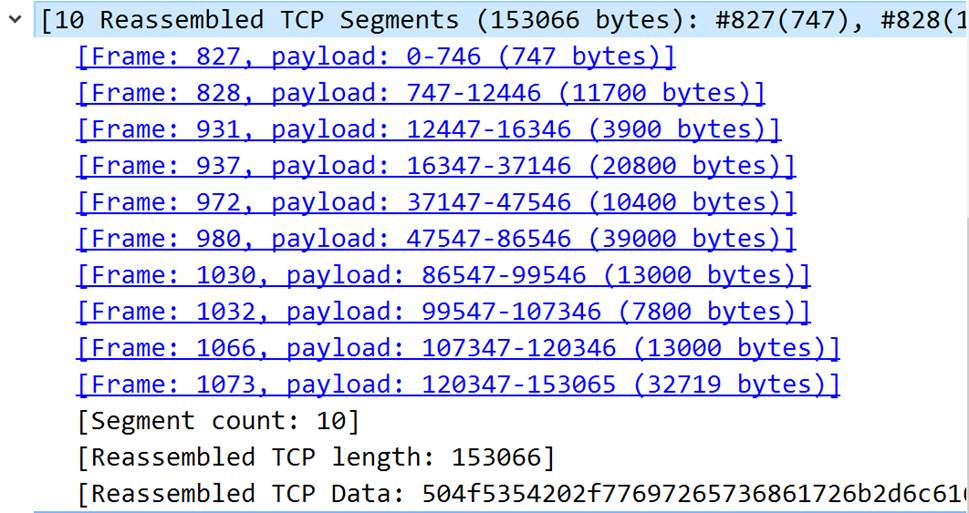
总传输字节量/起止时间
153066/(5.642914-4.660973) = 155881.055990 byte/s
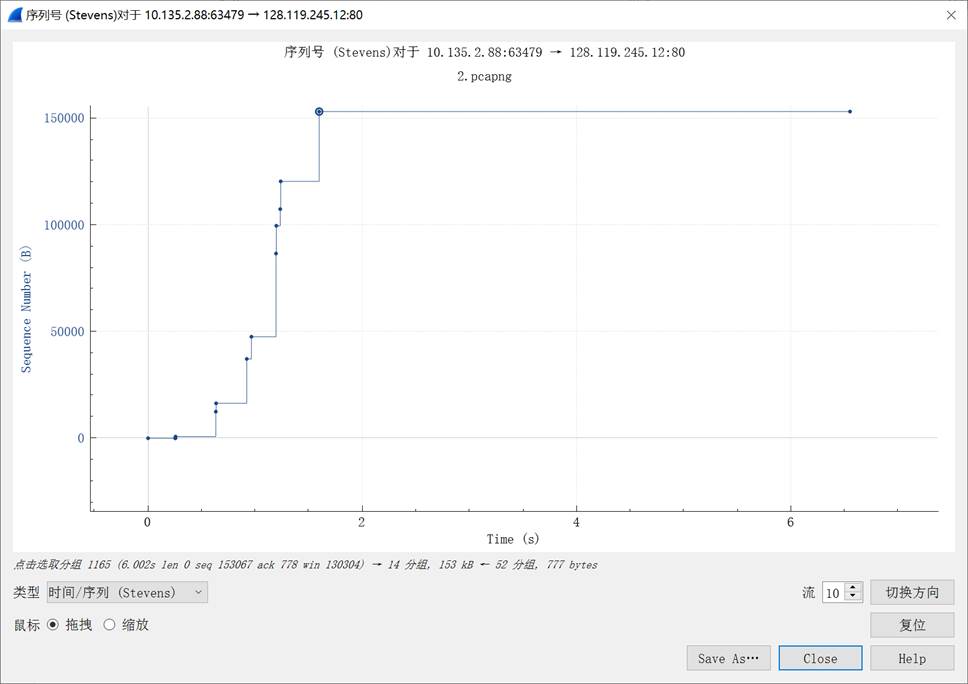
- Use the Time-Sequence-Graph(Stevens) plotting tool to view the sequence
number versus time plot of segments being sent from the client to the
gaia.cs.umass.edu server. Can you identify where TCP’s slowstart phase begins
and ends, and where congestion avoidance takes over? Comment on ways in
which the measured data differs from the idealized behavior of TCP that we’ve
studied in the text.
- Answer each of two questions above for the trace that you have gathered when
you transferred a file from your computer to gaia.cs.umass.edu
一开始是慢启动阶段 但是不便于观察其结束和拥塞避免的起止状态。
